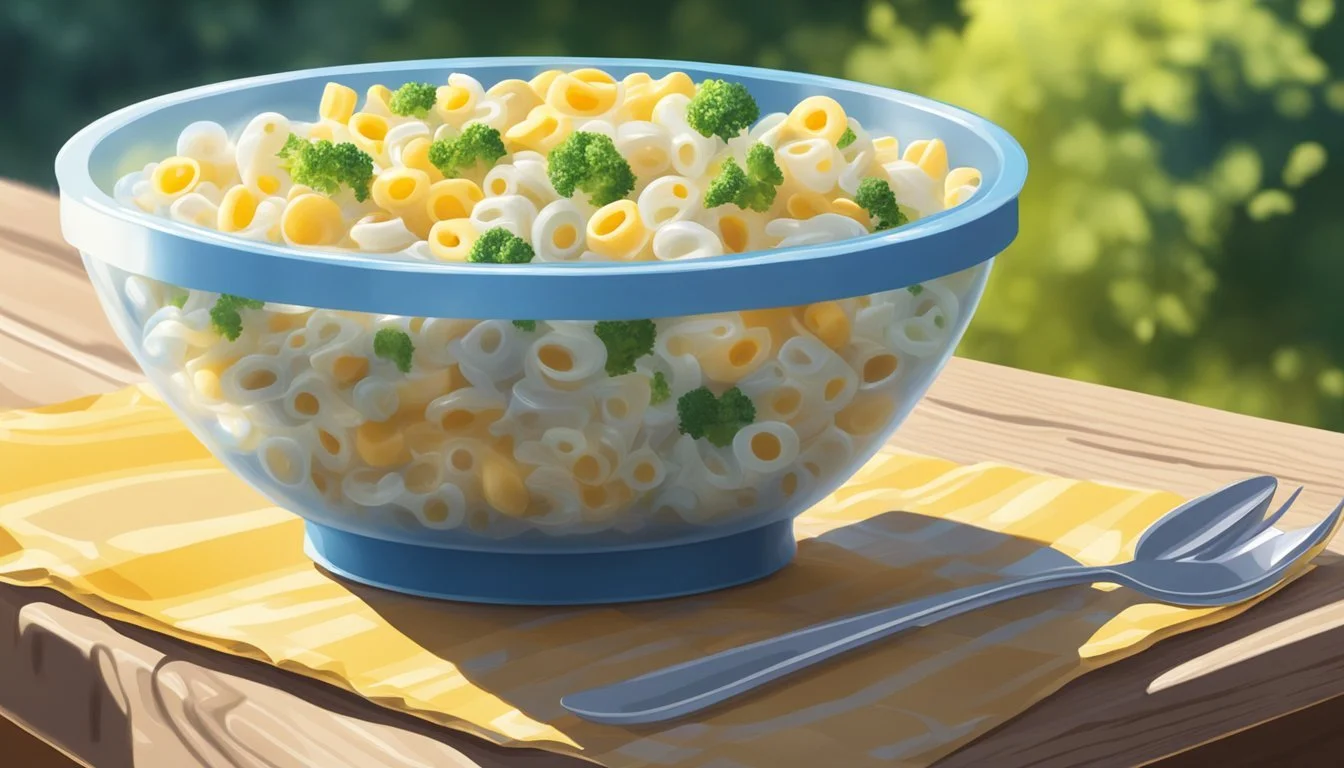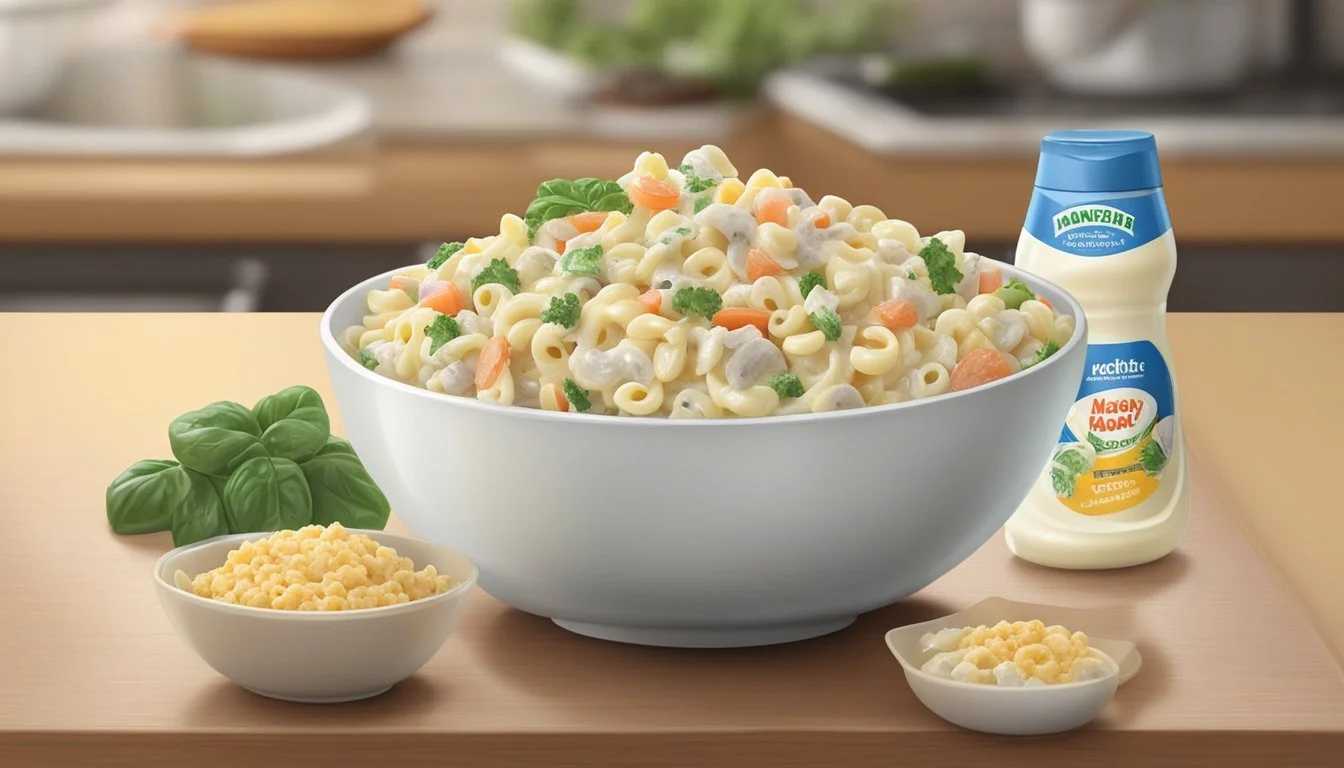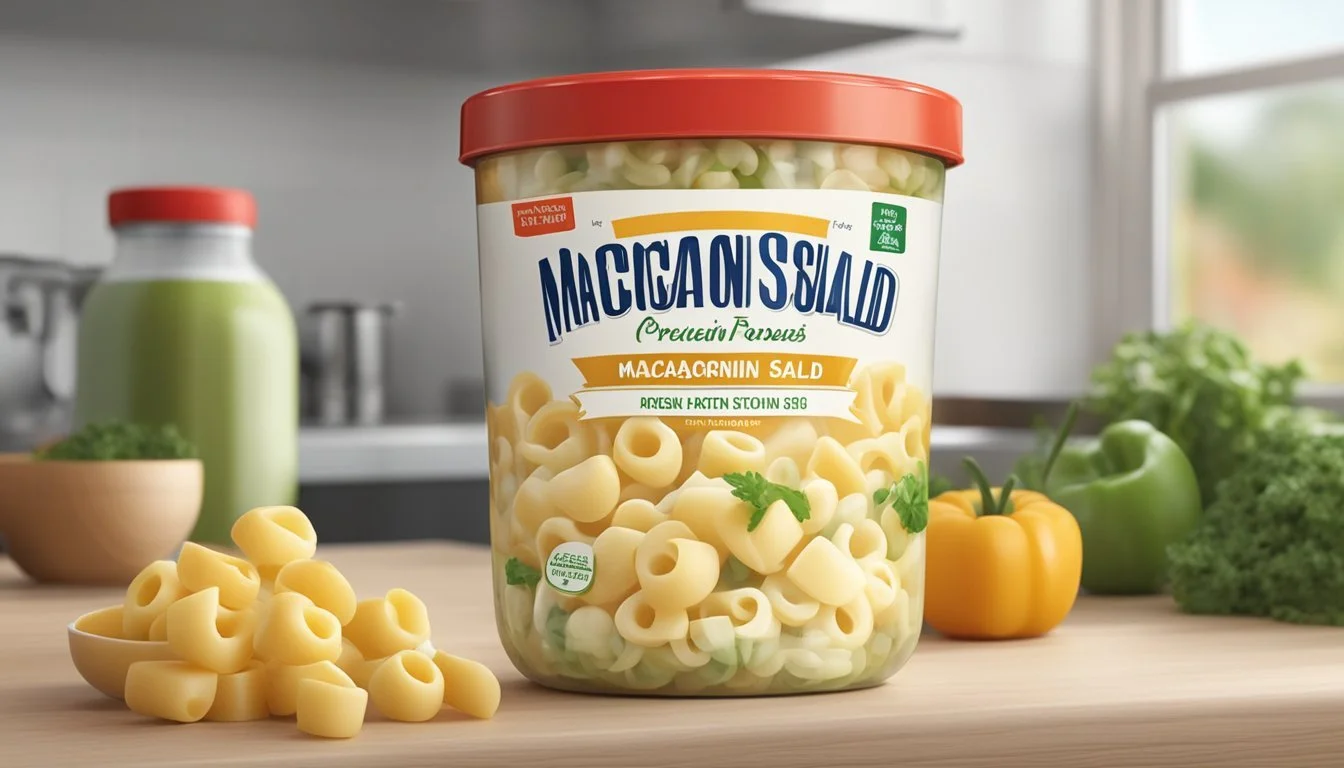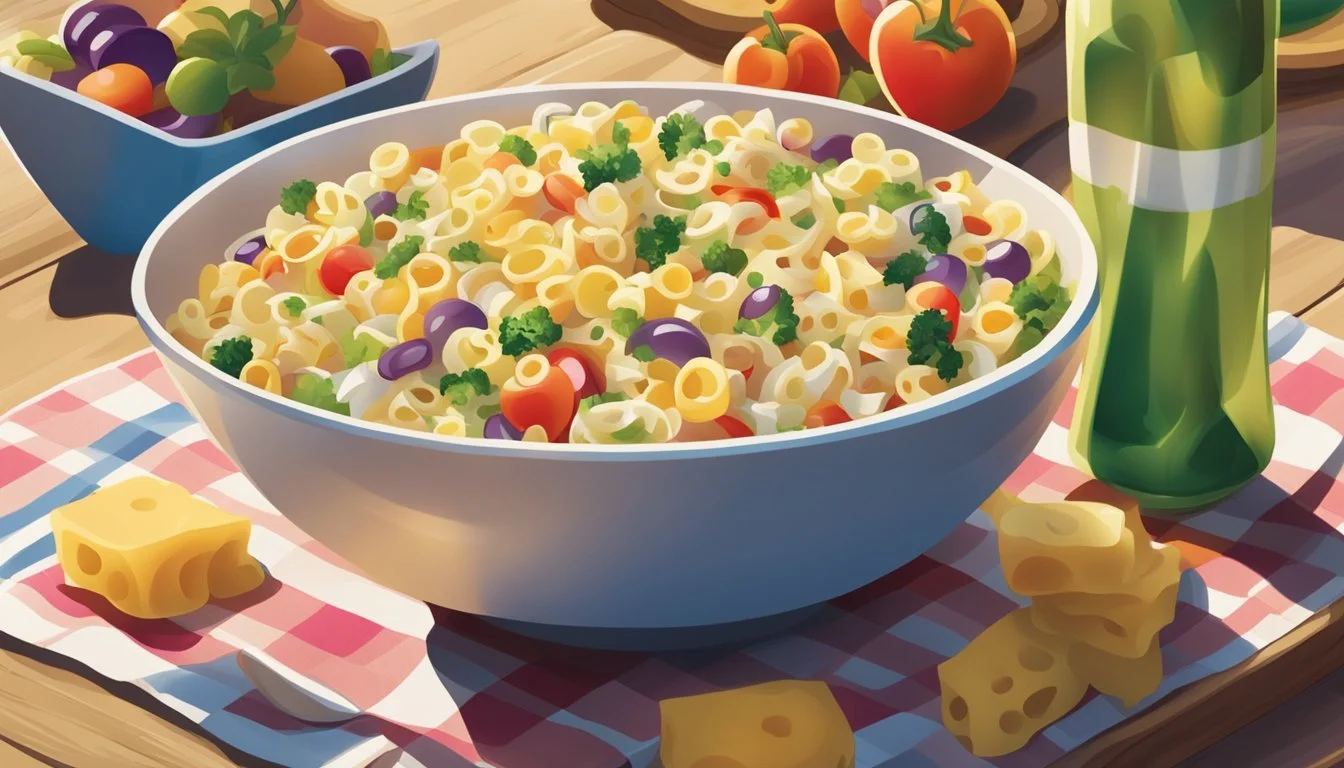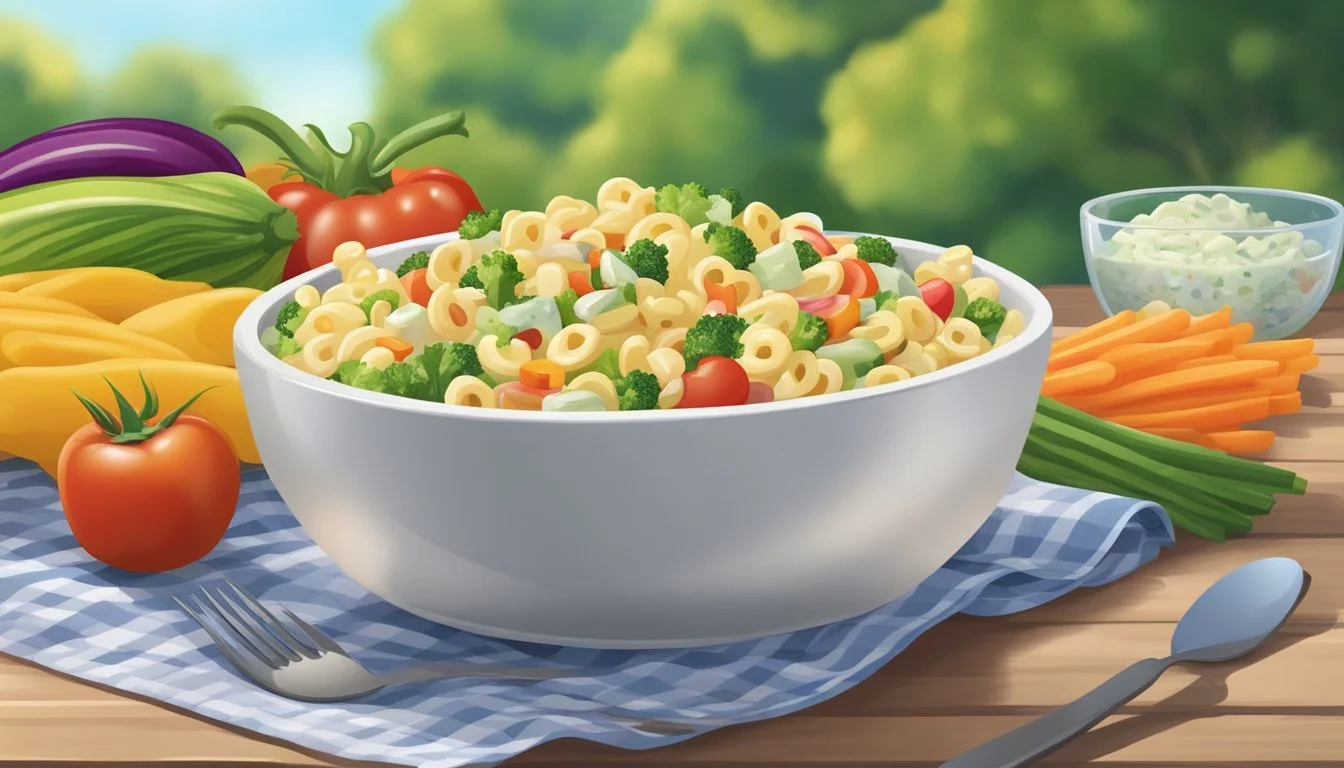How Long Does Freshly Prepared Macaroni Salad Last?
Shelf Life and Storage Tips
Macaroni salad is a classic dish often found at picnics and potlucks, known for its creamy texture and blend of flavors. When freshly prepared, the salad's quality is at its peak, offering a delightful combination of well-cooked pasta, crunchy vegetables, and often a mayonnaise-based dressing. The freshness of the ingredients and the absence of preservatives in homemade recipes play a central role in determining the shelf life of macaroni salad, making proper storage a key aspect to maintain its quality and safety for consumption.
Understanding the shelf life of freshly prepared macaroni salad is essential for both food safety and taste. Generally, when stored correctly in the refrigerator in an airtight container, macaroni salad can last between 3 to 5 days. The presence of dairy products, mayonnaise, and other perishable ingredients in the salad means that it is susceptible to spoilage. The temperature control of refrigeration slows down the growth of bacteria, but over time, the salad's quality will deteriorate, so it's recommended to consume it within this time frame.
It's important to note that while refrigeration extends the longevity of the dish, it does not halt the natural decline of freshness entirely. There are signs that indicate spoilage, such as an off smell, visible mold, or an alteration in texture. Consuming macaroni salad past its prime could pose a health risk, so it's crucial to assess the salad before eating to ensure that it still maintains its quality and freshness.
Understanding Macaroni Salad Composition
Macaroni salad is a popular dish whose longevity is directly affected by its ingredients and storage. In examining its composition, one can better understand how these factors influence its shelf life.
Key Ingredients and Their Roles
Macaroni salad typically combines elbow macaroni, vegetables, eggs, and often tuna (What wine goes well with tuna?) or chicken. Here's a brief overview of the roles these ingredients play:
Elbow Macaroni: Serves as the base; its quality affects the overall freshness.
Vegetables: Items like celery or bell peppers (What wine goes well with bell peppers?) add crunch and nutrients; fresher veggies extend shelf life.
Eggs: They enhance texture and richness but can reduce shelf life if not handled or stored correctly.
Tuna/Chicken: These proteins offer savory flavors but are highly perishable and should be kept cold.
Impact of Mayo, Dairy, and Other Perishables
The inclusion of mayo and other dairy products plays a crucial role in the life span of macaroni salad.
Mayonnaise: A primary binding agent, it is prone to spoilage and dictates the storage needs.
Dairy Products: Ingredients like cheese add flavor complexity but can shorten the shelf life compared to dairy-free versions.
The Role of Preservatives in Shelf Life
Preservatives, whether natural or artificial, are critical in extending the longevity of a macaroni salad.
Natural Preservatives: Ingredients like vinegar or lemon juice in the dressing can inhibit bacterial growth.
Artificial Preservatives: These may be found in store-bought mayonnaise or dressings and can significantly impact the salad's expiration date.
Optimal Storage Conditions
Proper storage significantly extends the shelf life of macaroni salad, maintaining its freshness and ensuring food safety. The following subsections detail the best practices in storing macaroni salad.
Effects of Temperature on Food Safety
Temperature plays a crucial role in preventing bacterial growth in foods. Macaroni salad should ideally be kept in the fridge at temperatures below 40°F (4°C). Bacteria multiply rapidly at temperatures between 40°F (4°C) and 140°F (60°C), so keeping macaroni salad refrigerated minimizes this risk.
Airtight Containers vs. Plastic Wrap
For storing macaroni salad, airtight containers are superior to plastic wrap. They prevent outside contaminants and odors from affecting the salad while keeping the moisture content stable. This can help to retain the desired texture and flavor of the salad for a longer period.
Airtight containers: Seal in freshness and protect from contaminants.
Plastic wrap: Offers a less effective seal and can more easily allow transfer of flavors and odors.
Refrigerator vs. Room Temperature
Storage location significantly impacts the longevity and safety of macaroni salad.
Refrigerator: Macaroni salad must be stored in the fridge immediately after preparation or serving. The cold environment slows bacterial growth and preserves the salad's quality for approximately 3-5 days.
Room Temperature: If left at room temperature for over two hours, macaroni salad should be discarded to avoid the risk of foodborne illness.
Shelf Life Expectations
When it comes to the shelf life of freshly prepared macaroni salad, consumers should expect it to last between 3 to 5 days when stored properly in the refrigerator. The freshness and safety of the macaroni salad are pivotal concerns, as improper handling can lead to foodborne illnesses.
Typical Duration for Freshness and Safety
The optimal timeframe for consuming freshly prepared macaroni salad, while ensuring both freshness and safety, is typically within 3 to 5 days when refrigerated. After this period, the risk of bacterial growth increases significantly which can result in food poisoning.
Bacteria: Bacterial growth is rapid at temperatures above 40°F (4°C).
Mold Growth: The presence of mold is a clear sign that macaroni salad should be discarded.
Factors That Affect Shelf Life
Several factors influence the shelf life of macaroni salad:
Ingredients Used: Certain ingredients may spoil more quickly than others.
Preparation Method: How the salad is prepared, whether in a sanitary environment, can affect its shelf life.
Storage Conditions: Refrigerating macaroni salad in an airtight container within two hours of preparation is essential.
Exposure to Heat: Leaving macaroni salad at room temperature can shorten its shelf life to just a few hours.
By adhering to proper storage guidelines, consumers can ensure the safety and enjoyment of their macaroni salad within the expected shelf life.
Identifying Signs of Spoilage
When assessing whether macaroni salad has spoiled, one should pay close attention to changes in smell, texture, and appearance. The presence of mold, slime, or discoloration are also clear indicators that the salad is no longer safe to consume.
Changes in Smell, Texture, and Appearance
Macaroni salad's freshness can quickly deteriorate. A sour or off odor is a primary indicator of spoilage. If the salad emits an unpleasant smell different from when it was first prepared, it is likely spoiled. In terms of texture, macaroni salad that has become excessively creamy or watery, or has pasta that is mushy instead of firm, indicates that it has gone bad. Additionally, any alterations in appearance, such as a dull color when it used to be vibrant, should raise concerns about the salad’s edibility.
Mold, Slime, and Discoloration
Mold growth, which can present as fuzzy spots of various colors, is an undeniable sign of spoilage. Macaroni salad exhibiting any hint of mold should be discarded immediately. A slimy or sticky film on the surface, especially on the pasta or vegetables, is also a red flag. Discoloration, such as any unusual dark, black, white, or green areas, is a symptom that the product is no longer safe to eat.
Safely Extending Shelf Life
Maintaining the freshness of macaroni salad involves precise refrigeration and, if necessary, appropriate freezing techniques.
Best Practices for Refrigeration
Prompt refrigeration: To maximize shelf life, one should refrigerate macaroni salad within two hours of preparation. This reduces the risk of bacterial growth.
Temperature: Store the salad at a constant 40°F or lower.
Airtight containers: Utilize airtight containers to protect against contaminants and moisture.
Separation: Keep the macaroni salad separate from raw food items to avoid cross-contamination.
Regular checks: Monitor the salad for any signs of spoilage, such as an off smell or appearance, and discard if these signs are present.
Tips for Freezing Macaroni Salad
Freezing is not commonly recommended, as it can drastically alter the texture and quality of the salad's components. However, if one opts to freeze macaroni salad:
Cooling before freezing: Ensure the salad is completely cooled before sealing it in an airtight container.
Portion size: Freeze in small, manageable portions for ease of thawing.
Labeling: Label containers with the date to keep track of how long the salad has been frozen.
To thaw frozen macaroni salad, one should transfer it from the freezer to the refrigerator for several hours or overnight, rather than thawing at room temperature. This helps in maintaining a safe temperature throughout the thawing process.
Macaroni Salad in Social Gatherings
Macaroni salad is a popular side dish for picnics, potlucks, and barbecues. When serving macaroni salad at social events, maintaining proper storage and handling is crucial to ensure it remains safe to eat.
Safe Handling for Picnics and Barbecues
At picnics and barbecues, macaroni salad should always be served with care to prevent foodborne illness. Since these events often take place outdoors, where temperatures can promote bacterial growth, it's important to limit the time macaroni salad spends unrefrigerated. Food safety guidelines suggest that perishable foods should not be left out for more than two hours, or one hour if the temperature is above 90°F. Always serve macaroni salad on a clean platter and use clean utensils to minimize contamination.
Keeping Macaroni Salad Chilled at Events
To keep macaroni salad chilled during outdoor gatherings, make use of insulated coolers or ice-filled trays. The goal is to maintain the salad at or below 40°F, effectively slowing bacterial growth. An airtight container is also recommended to protect it from environmental factors and to keep it fresh. It is advisable to divide the salad into smaller portions before the event. This allows for only part of the salad to be exposed at any given time, preserving the rest at a safe temperature.
Pros and Cons of Store-bought vs Homemade
When opting for macaroni salad, one should consider both the shelf life and the taste and quality differences between store-bought and homemade options.
Analyze the Shelf Life Variations
Store-bought Macaroni Salad:
Shelf Life: Typically lasts 7-10 days unopened in the refrigerator.
Preservatives: Contains preservatives that extend its shelf life compared to homemade variations.
Homemade Macaroni Salad:
Shelf Life: Generally safe to consume for 3-5 days when stored properly in the refrigerator.
No Preservatives: Lacks the chemical preservatives found in store-bought versions, which shortens its shelf life but may appeal to those seeking natural options.
Considerations for Taste and Quality
Store-bought Macaroni Salad:
Taste Consistency: Offers a consistent flavor profile from batch to batch.
Quality: While convenient, the inclusion of preservatives and additives can affect the overall quality and freshness.
Homemade Macaroni Salad:
Flavor: Allows for customization of the recipe, which can result in a fresher and more personal flavor.
Quality: Making macaroni salad at home usually leads to a higher quality product due to fresh ingredients used without the need for preservatives.
Consequences of Consuming Spoiled Macaroni Salad
Eating spoiled macaroni salad can lead to foodborne illnesses with a range of unpleasant symptoms. It is crucial to recognize these symptoms and know the safety measures to prevent such outcomes.
Foodborne Illness and Symptoms
Signs of Food Poisoning
Nausea
Vomiting
Diarrhea
Abdominal cramps
Fever
Consuming macaroni salad that has gone bad can result in food poisoning. Bacteria such as Salmonella, E. coli, and Listeria can grow in improperly stored salad, leading to these symptoms within hours to a few days after ingestion.
Preventive Measures and Safety Tips
Storage Tips:
Refrigerate promptly in an airtight container.
Consume within 3 to 5 days for freshness and safety.
Keep refrigerated below 40°F.
Before Eating:
Examine for unusual odors or colors.
Discard if there are any doubts about its condition.
Food safety protocols are vital in preventing the growth of harmful bacteria that cause foodborne illnesses. Individuals are encouraged to discard macaroni salad if it has been left unrefrigerated for over two hours or if its storage duration has exceeded the recommended time frame.
Nutritional Considerations
When examining the nutritional profile of macaroni salad, one should consider both its caloric impact and the contribution of various vitamins and minerals. The specific nutritional content can vary depending on the ingredients used.
Caloric and Macronutrient Content
Macaroni salad is primarily a carbohydrate-rich dish, with the pasta providing most of the caloric content. It typically contains fat from ingredients like mayonnaise or dressings and could contain protein from additions such as cheese or meat. The presence of cholesterol is contingent on the inclusion of eggs or other animal products.
Carbohydrates: Integral for providing energy, with amounts varying by recipe.
Fat: Can be high due to creamy dressings; opting for low-fat alternatives can reduce overall fat content.
Protein: Generally moderate, depending on whether cheese, eggs, or meats are added.
Vitamins and Minerals in Ingredients
The ingredients mixed into macaroni salad, such as vegetables or dairy products, can introduce a range of vitamins and minerals. Ingredients such as bell peppers are sources of Vitamin C, while those containing dairy can provide Vitamin A and potassium.
Vitamin A: Important for immune function and vision, may be present from dairy products or certain vegetables.
Vitamin C: Present in vegetables like bell peppers; contributes to tissue repair and the immune system.
Potassium: Found in various salad ingredients, it assists in muscle function and cardiovascular health.
Iron: Occasionally present, its level is largely determined by the incorporation of meat or certain legumes.
Creative Variations and Recipe Ideas
When crafting a unique macaroni salad, the integration of diverse flavors and textures can transform a classic dish into an array of gourmet variations. Below are some suggestions to inspire culinary experimentation.
Introducing New Flavors and Textures
To elevate the taste profile of macaroni salad, one might consider marrying pasta with a variety of ingredients that introduce new flavors and textures. A vinaigrette dressing, which can be made using olive oil, brings a zesty and lighter taste compared to traditional mayonnaise-based dressings. For an additional punch, one could mix in tangy dairy products like feta or goat cheese.
Here's a table summarizing potential ingredients for flavor and texture enhancement:
Ingredient Flavor Texture Feta Cheese Tangy Creamy Sundried Tomatoes Rich, Umami Chewy Roasted Peppers Sweet, Smoky Soft Olives Salty, Briny Firm Artichokes Nutty, Earthy Tender
Incorporating ingredients like toasted nuts or seeds can add a satisfying crunch, which contrasts nicely with the softness of cooked macaroni. Fresh herbs, such as basil or cilantro, inject a burst of freshness and color.
Alternatives to Traditional Macaroni Salad
Those looking to step outside the classic macaroni salad convention might try substituting traditional pasta with alternatives such as quinoa or couscous to captivate the palates of health-conscious diners. By infusing elements from potato salad, egg salad, chicken salad, or even seafood, chefs can create a hybrid dish with familiar yet distinctly new taste combinations.
For example, by folding in flaked tuna or chunks of cooked shrimp, one can mimic seafood salad's beloved flavors. When opting for a dairy addition, sour cream can offer a richer, tangier base than mayonnaise, especially when paired with herbs and lemon zest for a fresh note.
Recipe Idea: Seafood Macaroni Salad with Olive Oil Vinaigrette
Ingredients: cooked shrimp, elbow macaroni, Kalamata olives, red bell pepper, parsley, olive oil, lemon juice, garlic, Dijon mustard.
Preparation: Whisk together olive oil, lemon juice, garlic, mustard for the vinaigrette. Combine with other ingredients and chill before serving.
By exploring these creative spins on traditional macaroni salad recipes, the possibilities for innovation are vast, ensuring a delightful culinary experience with every variation.

